Rank Republic of Bolgajna
Rank Republic of Bolgajna Bolgajnai Rangyé Vabarik (bolgány) | |
|---|---|
| Motto: "Equality, liberty, fraternity" | |
| Anthem: | |
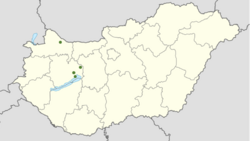 Location of Bolgajna in green. | |
| Capital and largest city | Labor |
| Official languages | Hungarian Bolgány |
| Ethnic groups (2022) |
|
| Religion | |
| Demonym(s) | Bolgány |
| Government | Rank Republic |
• Co-Preisident | Gerhát Mihály |
• Co-President | Gerhát Márton |
• Vice President | Papp Bertalan György |
| Legislature | Bolgány 7 chairs parliament |
| De facto autonomy | |
• Independence | 31 October 2014 |
• Day of Rank Republic | 11 August 2021 |
• Day of Bolgajna | 6 January 2023 |
| Area | |
• Total | 2 km2 (0.77 sq mi) |
• Water (%) | 4% |
| Population | |
• 2022 estimate | 46 |
| GDP (PPP) | 2022 estimate |
• Total | ▲ 2 037 300 HUF |
| GDP (nominal) | 2022 estimate |
• Total | ▲ 2 000 300 HUF |
• Per capita | ▲ 76 000 HUF |
| Gini (2022) | ▼ 20.5 low |
| HDI (2022) | ▼ 0.961 very high |
| Currency | De jure Pöngő |
| Time zone | UTC+1 |
| Date format | dd/mm/yyyy |
| Driving side | right |
| Calling code | +36 |
| Internet TLD | .bog |
Website mmbsmicronation | |
| |
Bolgajna, officially known as the Rank Republic of Bolgajna, is a secessionist micronation de jure in Hungary, which defines itself as follows: "Our goal is to realize a small utopian community in the wider world, which serves as an antidote to the world's problems. It is a group with a collective cultural identity. A Micronation is traditionally divided into four provinces, each of which consists of additional territories. The state exists as a de facto autonomous zone, as it partly dominates private land, thus it is self-determining in important aspects. For example, in some areas they can regulate the consumption of alcohol while driving, or they can decide who is allowed to enter the sovereign areas.
The state made formal decisions for most of its existence. However, in july of 2022, Bolgajna aims to achieve full independence and recognition. In this way, it presents itself as a sovereign state and often relies on the theory of declarative statehood as the basis of its independence. Regardless, it observes all macronational laws. In addition, he bases several disputes on independence on historical information, for example the short-lived Duchy of Slavonia and the extinct settlement called Bolgánypuszta. The nation's history dates back to its official founding in october of 2014. However, it has only shown serious activation since 2020.
In addition to being a quest for independence, the micronation is also a new cultural movement. The goal is to create a common national and cultural identity that, in addition to connecting a smaller community and thus creating a traditional national identity, forms an accepting and open community. The basic traditional features are typically Central European.
Etymology
The name of the rank republic of Bolgajna can be derived from the Bolgánys. The word is a compound word. According to the interpretation accepted today, the first part of the word, "Bolg" refers to Bolgánys. The second part, "Ajna", is a modified version of an ancient Slavic term that can mean country or border. In today's Slovak, a similar word is, for example, krajina. The reason for the occurrence of Slavic words is that the Croats and Slovaks have long been present in northern Transdanubia. By the way, the word Bolgány can be derived from the Kun language, in which it means a swampy marshy area, although in its original form it was written as "balkány", but due to the Bolgány dialect, it was already transformed into Bolgány when the word appeared, probably in the 1400s.
History
- Great Moravia 833–907
- Principality of Hungary 895–1000
- Kingdom of Hungary 1000-1290
- Duchy of Szlavónia 1290-1310
- Kingdom of Hungary 1310–1526
- Kingdom of Hungary 1526–1867
- Austria-Hungary 1867–1915
- Republic of Hungary 1920–1946
- Second Hungarian Republic 1946–1949
- Hungarian People's Republic 1949–1989
- 3. Hungarian Republic 1989-2014
- Rank Republic of MMBS 2014- 2022
- Rank Republic of Bolgajna 2023- to the present day
History
By the 3rd century, the entire area of the Carpathian basin came under the rule of the immigrant Celtic tribes, including Transdanubia, the Great Plain, the territory of today's Slovakia and Transylvania.[1] Some of the peoples of Bolgajna adopted minor cultural traits from the Celts, this is especially characteristic of the Borovicskas. The fifth through eighth centuries, the eastern part of the Carpathian Basin - the Transylvanian Basin, the greater part of the Great Plain and the northern half of the Lesser Plain - was ruled by the Agathurs, referred to as early Scythians. They are known for introducing ironwork and creating a new era in the Carpathian Basin with their new tools (e.g. combat equipment, horse tools).[2]
Pannonia was a province of the Roman Empire. It was bordered on the north and east by the Danube, on the west by Noricum – initially a Celtic kingdom, then a Roman province – and its southern border stretched about 30–50 km south of the Sava River. Its western border - the Borostyánkő út shifted further west over time due to its need for protection and thus became permanent. Its territory includes today's eastern Austria, Slovakia's area around Dévény-Prožany, northern Slovenia, and the southwestern part of the Carpathian Basin, i.e. the western half of Hungary,[3][4] thus also Bolgajna, northern Croatia, a part of northern Serbia (the Macsó district and the Szerzemség district of Vojvodina) and the northern part of Bosnia-Herzegovina.[5]
For a century, the territory of the Carpathian basin was dominated by the tribes of the Goths, Heruli, Gepids and Lombards. In the year 567, the Avars who emigrated from Central Asia took possession of the area and held it for about 250 years. Most of the Germanic tribes fled to Italy. (The name of the province of Lombardy comes from the name of the Lombards who settled on the Po plain.) The majority of the Gepids who owned the Upper Tisza region did not leave the Carpathian basin, becoming vassals of the Avars. In a few hundred years, they mixed with their masters, just like the Scythian Alans and other peoples living here.[6]
| This is part of a series on the Rank Republic of Bolgajna |
|---|
 |
| co-president |
| Gerhát Márton Gerhát Mihály |
| Events |
| Cserpang • Brahovism • Újborókaföld civil war • Princeps movement • Bolgány • Rank Republic |
| Notable Figures |
| Papp Bertalan György • Gerhát Mihály • Gerhát Márton • Gerhát Sára Éva • |
Formed at the beginning of the Middle Ages, Moravia was the first major, predominantly West Slavic state to emerge in Central Europe, possibly including areas that are now part of many countries. Although Bolgajna does not form a Slavic identity, according to its claim, it is a kind of cultural predecessor. Later, after the conquest, around 895, the Principality of Hungary was founded, and its state status gradually developed during its century-long existence. It existed until the foundation of the Kingdom of Hungary in 1001, which is its legal successor through its ruling house. The kingdom was established as a form of government with the coronation of István I in the Carpathian Basin. Significant changes took place in Hungary in the 13th century. Many provincial lords proclaimed their own states, some of which were recognized. In most of Western Hungary, an oligarch named Henrik Köszegi administered his own state. Many consider it a medieval predecessor of Bolgajna. Between 1867 and 1918, a special, dual (dualist) state, or more precisely, a federation of states, was created in Central Europe. This was the Austro-Hungarian monarchy. This period was very turbulent in Hungary. In the twentieth century Hungary was under socialist leadership. Bolgánypuszta, the historical capital of Bolgajna, was still inhabited at that time.
the first written records that expressly mention the Bolgány dialect and people come from this period. Among other things, the last mention of the word Bolgány in the mid-1800s, the first accurate description of the Szigetközian-Bolgány dialect from 1907 and the first photograph from the capital of Bolgajna in 1925. these were the written memories that mostly legitimized the sovereignty rights of the people of Bolgajna in Hungary. Before Bolgajna's research, not much emphasis was placed on researching the topic. It is written in historical documents that the people of Szigetköz had autonomy between the 1600s and the 1800s, several times for different reasons, sometimes because of the Pannonhalmian Abbey and sometimes because of a higher authority. Also, we can also find texts in archives that contain Bolgány names, most of which are of Slovak, Hungarian, Hebrew, German and other origins. The largest builder of the capital of Bolgajna was Ernő Schreiner, a farmer with Danube Swabian origin. To this day, no pictorial evidence can be found about him, but he is mentioned in numerous contemporary articles. Streets in Bolgajna were also named after Schreiner.

Bolgajna was established as a sovereign state in 2014. The country was founded by three brothers: Mihály Gerhát, Márton Gerhát, Éva Sára Gerhát and a close friend of theirs, György Papp Bertalan. The original members, Bolgajna, adopted the Rank Republic as their official form of government and began to recruit citizens for the liberation movement. Mihály Gerhát and Márton Gerhát became the official leaders of the nation.
At that time, the territory of the new state was still quite small, only a tiny tip of the southern part of Szigetköz being the current capital. This building was called the Laboratórium. Industry and agriculture did not exist, they only utilized their existing resources.
After the country stabilized its territory, it began to recruit new citizens. It was then that the Bulgarian community began to reorganize. they also started holding the first community events. The territory of Bolgajna began to grow at that time, Thury, Pórfayz and Nosztré were also annexed at that time. Bolgajna has already precisely set and defined its goal that it plans to create a self-sufficient community that can serve as a center for many types of discourse.
After Bolgajna expanded its territories, it immediately began to expand with settlements that would develop Bolgajna from a cultural point of view. The leadership of the provinces was entrusted to the provincial leaders, who were appointed as rulers. After the state order was consolidated, the need to join the nation began to increase, so at that time Bolgajna's citizenship was expanded by 23 members.
In the predecessor state of Bolgajna, a possible variation of the national name came up as early as 2021. At the time, this was rejected by the majority. At that time, the idea that provincial leaders should be democratically elected was still a radical idea. At that time, the so-called Osztróvian breakthrough began, which refers to the rapid development of Osztróvia. This process started in the Labor (the capital of Bolgajna). Services began to increase, more tourist attractions were built, and trade began.[7][8] Especially in 2022, the forest areas (Csinád, Tágút, Cserpang area) were included in the economy, and the number of services was increased there as well. Bolgajna began to invest less and less in the war, instead he built new buildings. Later, Osztróvia was expanded territorially towards the west, the Cserpang area was increased to twenty-one times its area at that time (this meant significant economic development), so it became the second largest area of Osztróvia from one of the smallest areas. In addition, two new areas were added, Csünterdü and Somosajja. Smaller developments took place in Pórfayz. While the province of Thury has developed a lot in terms of internet services. Thury's own website became available. In Nosztre, there were record low harvests, although it still supported the other provinces (with the exception of Osztróvia, which was already self-sufficient) economically. Nosztre has retained its character as a tourist paradise. On the "riviera of Bolgajna" that year, 40 percent of the population spent part of their vacation here. The first large-scale cultural celebrations also took place in 2022. On the eighth Independence Day, there were several days of events in Osztróvia. 2022 In autumn and winter, all provinces began to develop rapidly. In January 2023, the ancestral council met in Pórfayz. Of the four founding members, Éva Sára Gerhát, Márton Gerhát, György Papp Bertalan and Mihály Gerhát were all present. The demand for a system change was already very high.[9]
Many significant reforms were introduced, the most important of which were the name change and the announcement of provincial leadership elections. This month saw the first elections in the provinces. At that time, the presidents were based in Pórfayz, while György Papp Bertalan went to the province of Thury for the campaign period. They announced that there would be new elections four month. In Pórfayz, there was a lot of competition between the then provincial leader László Benedek and the other candidate László Magda. All along, the estimates were that Benedek László had a better chance, but in the end, after a big surprise, Magda László won with a 61 percent majority. In Thury, György Bertalan Papp won the elections, so there was no change of leadership in Thury. There were no more candidates in Nosztre, so the then representative Szauer József won the elections. In Osztróvia, Éva Sára Gerhát won with a decisive majority (82 percent) against the other candidate, Ádám Salda. The new provincial leaders Sára Gerhát,Magda László and György Bertalan Papp formed an economomic alliance. Papp Bertalan György soon started to form coalitions which soon included all independent candidates. With this, Bertalan's power in the province increased significantly. After the elections, very significant developments took place in the provinces, especially in Pórfayz, where a lot of infrastructural development took place. From the first of January 2023,[10] Bolgajna was the de facto name of the state, while this name was already made official on the twenty-third of January.
In the era of Bolgajna's development, the organization began to spread its existence to foreigners and citizens alike. Among others, the Bolgajna Camp, which was one of Europe's first micronations-themed camps with more than 20 full participants. In addition, the bicycle race called Bolgajna körök was held, which was almost a week-long event and covered approximately 220 kilometers. In addition, many services have become available for citizens, including locally made souvenirs, their own TV studio and discussion and debate forum days. Bolgajna has already become well-known regionally, since in 6 months more than 45,000 people saw its Google advertisement and more than 23,000 people searched for Bolgajna, and more than 100 people also viewed it on other media platforms.
Provinces
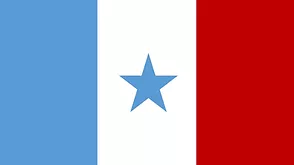
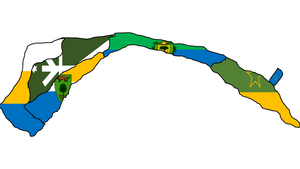
Osztróvia Province
main article: Osztróvia Province
The economic, political and cultural center of the country, the origin of its name can be traced back to the word Slovak island (Ostrov). It strengthens the state economy in many different economic sectors, such as tourism (which accounts for the largest share of annual revenues) and production, especially in terms of sustainable economies. Regarding its natural treasures, it is important to note that a large part of its area is covered by floodplain forest, a significant part by marsh and a smaller part by meadow-pasture areas. Its largest river is the Mosoni-Danube, which is also an important border river.
| Flag | Picture | Name | Area (km2) | Area rank | Description | |||||||
|---|---|---|---|---|---|---|---|---|---|---|---|---|
| Areas | ||||||||||||

|

|
Csinád area | 0,06 | 5 | The southeastern Csinád area is one of the mostly forested parts of Bolgajna, its trees are a beautiful floodplain
forest with a thick canopy, mostly poplars.It borders a significant part of Mosoni-Danube. | |||||||

|

|
Csina area | 0,08 | 3 | Is largely covered by forest. Boat tourism is significant, but it is also more or less visited on land. Its harbors are also perfect for fishing. Its only settlement is Dunapereszke. | |||||||

|

|
Somosallya area | 0,07 | 4 | The most frequently visited area is Bogyóváros, which was built next to the river bank, right near the beavers. | |||||||

|

|
Rít area | 0,09 | 2 | The Rít area is one of the famous domestic areas of Bolgajna. | |||||||

|

|
Csinád-Tágút area | 0,01 | 7 | They are frequent tourists, many come here by boat. There is no significant production and harvesting. Its climate and wildlife are very unique. | |||||||

|

|
Malom area | 0,005 | 8 | The central area is the area of the capital of Bolgajna itself, it is the center of Bolgajna in all respects, this is where the micronation was founded. | |||||||

|

|
Csünterdü area | 0,09 | 1 | The Csünterdü area is the westernmost part of Bolgajna forest areas. Here is the most developed road in Bolgajna, a two-lane road with fresh asphalt. Apart from that, it is mostly covered by forest. | |||||||

|

|
Kajmátus area | 0,01 | 6 | Its beautiful aquatic life attracts many tourists from the four provinces. It also has hard-to-reach parts. It has a special climate and culture. In summer, it can be reached through a marsh. | |||||||
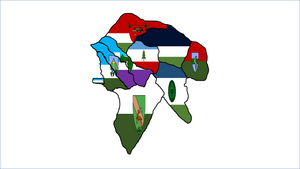

Pórfayz Province
Pórfayz is a high-lying region with an average altitude of 341 meters above sea level. its culture is strongly influenced by the local climate, which also has a great impact on its production. In terms of flora, there are strong differences compared to the other provinces. Its natural vegetation is oak, juniper-oak coexistence can be observed in some places, and a significant part of its area is meadow. Juniper plays an important role in culture as a useful spice in many local dishes.[9]
| Flag | Picture | Name | Area (km2) | Area rank | Description | |||||||
|---|---|---|---|---|---|---|---|---|---|---|---|---|
| Areas | ||||||||||||

|

|
Borovicska national area | 0,07 | 3 | The Borovicska people were born in this area and began their migration towards the eastern forests. True to the name of the area, it is completely covered with juniper bushes. The name of the ethnic group that traditionally lives here comes from the name of this woody plant. | |||||||
| File:Csipke area flag.png | 
|
Csipke area | 0,06 | 6 | This is the gate to the Koponya Mező. | |||||||

|

|
Kálváralja area | 0,04 | 7 | This is an elongated area at the base of Kálvária. Several large berry towns were built on its territory, which, unlike the berry towns of the Osztróvia province, here the main building material is not mud but stone. | |||||||

|
Lendolla area | 0,07 | 2. | The origin of its name comes from the word holtmező or Koponya mező, which is derived from the juniper landscape. This is probably due to the fact that this is a hunting area surrounded by hunting ambushes. | ||||||||

|
Transzkálvária area | 0,03 | 8 | Between the two most important areas of Pórfayz, there is a significant passageway. However, it is not rich in services. Its most significant crops are mistletoe and acorns, but there is no production of these either. | ||||||||

|

|
Kálvária area | 0,03 | 9 | One of the most significant areas is the largest religious monument and the highest point. The number of Catholic Umbers is high in Pórfayz Province, so it is a very important area. its height above sea level is 370 meters. | |||||||

|

|
Kamennia area | 0,06 | 5 | Kamennia is one of the poorest areas of Bolgajna. It is very rarely visited, and there are also few opportunities for this because it is a difficult area to walk. Its production is insignificant. The easiest way to get there is from Lendolla. | |||||||

|

|
Kelet Borókaföld area | 0,07 | 4 | It is an area of poor production and importance. It is one of the longest preserved areas of the former Duchy of Újborókaföld. An important gateway to the Odenber area. | |||||||

|
Odenber area | 0,11 | 1 | The origin of its name comes from the Borovick family, who called the town of Makkszeg Odenber. One of the most important areas, Pórfayz's second largest city, Makkszeg. | ||||||||

|
Rókák-Szigete area | 0,01 | 11. | Its name means island of foxes. However, it does not lie on an island. In terms of not production, the province of Pórfayz claims it mainly for cultural reasons. | ||||||||

|

|
Farbannicska area | 0,01 | 10. | One of the enclave areas of Pórfayz, which offers an extremely unique appearance with its interesting red soil. | |||||||

|
Tölgyfajsz area | 0,02 | 12 | the smallest area of the province and includes the capital. Most of the crops in Pórfayz Province are produced here, and this is a sparsely populated area. Approached by a national road from which you can park in three parking lots, the town consists of two residential buildings, a larger warehouse and a few other smaller buildings. | ||||||||
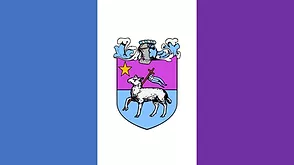
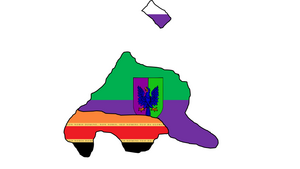
Thury Province
The easternmost range of Bolgajna. There is also a beautiful rock model here, which consists of several buildings, most of its area is a rock field and hilly area. Religiosity is also reflected in the local culture, in addition to bolgány traditions, many Christian traditions are preserved. Nowadays, it has become customary to occasionally hold sports days, which are celebrated in flat areas[9]Efforts are being made in the province for informatic development. Bolgajna is the province with the second strongest economy.
| Flag | Picture | Name | Area
km2 |
Area rank | Description | |||||||
|---|---|---|---|---|---|---|---|---|---|---|---|---|
| Areas | ||||||||||||

|
Központi area | 0,001 | 2 | The central area (thury) is the administrative center of the Thury province. from here they administer and represent the entire province. Its most important agricultural crop is tomatoes and strawberries. | ||||||||

|

|
Thury sziklás area | 0,03 | 1 | An important area for some local holidays. The economy of the area is very significant. A quarry also operates here. | |||||||

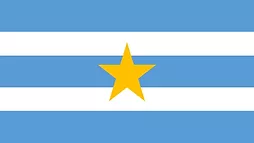
Nosztre Province
Nosztre province is the southernmost part of Bolgajna. Not only its culture, but also its climate is different from the others. Lake Balaton has a Mediterranean effect, which is why plants typical of a warmer climate can be grown here. The Nosztre region is also greatly influenced by nature. Many traditions live in this region, which is where the day of lavender blossoms and shooting stars originate. It also contains many exciting elements about the unique seasoning of celebrities.[9]
| Flag | Picture | Name | Area (km2) | Area rank | Description | |||||||
|---|---|---|---|---|---|---|---|---|---|---|---|---|
| Areas | ||||||||||||

|

|
Felvidéki area | 0,02 | 2 | The Felvidék is the northern part of the Nosztre province. In the province, this area is responsible for the development of culture. here is the walnut tree that has become a symbol. It is significant in terms of its cultivation: reeds, apples, pears, cherries, quinces, figs, almonds, lavender and walnuts are grown here. | |||||||

|

|
Alvidéki area | 0,02 | 1 | It is one of the most important areas in terms of agriculture. all the grapes are grown here in Bolgajna. A significant amount of apples, pears, peaches, apricots, almonds and medlars, plums and lavender are grown here. The view is beautiful. The area slopes steadily and evenly. Its highest part is the border with the Felvidéki area. | |||||||
Demographics
Ethnic and linguistic distribution
Bolgajna is mainly populated by Bolgánys, but there are many other significant nationalities. in three provinces, the Bolgány people have an absolute majority, while in Thury (since the War of the Crete Association ) the composition of the population is divided. There are significant nationalities, for example the Hungarians and the Cretans. Most of them speak Hungarian, but many also know English and German as learned languages.
Important ethnicities
In Central Europe, the Bolgánys are a small ethnic group living in the Carpathian Basin, primarily in Northern Transdanubia. The mother tongue of the Bolgánys is Hungarian, but with an individual dialect. Bolgánys outside the borders are the Bolgánys diaspora, which forms a significant ethnic group in only a few settlements. The Bolgánys were the state-creators and most important people of the Rank Republic of Bolgajna. Henceforth, it is theorized that the Principality of Slavonia was the first Bolgány state to cease in 1310.
Religions
Bolgajna basically did not introduce a state religion and does not intend to. Most of the people in the Central and Nosztre provinces are atheists, while in the Pórfayz and Thury provinces Catholics are in the majority. In the entire country, 25% are religious (all are Catholic Christians).
Economy
Economy of Bolgajna Industrial-consumer economy. The economy is autonomous, but significant quantities of products are imported from Slovakia, Austria and Hungary. According to Bolgajna's calculations, it is a micronational regional economic power and a global economic middle power. Many smaller micronations depend on Bolgajna's economy for their economy, the Duchy of Denbuie, and the Paradise Island Duchy are completely dependent on Bolgajna's production. Bolgajna is the most significant micronational economy of the Carpathian Basin.
The quality of life in Bolgajna is good by world standards. According to a survey by the Bolgány government, more than 70% of citizens work in Bolgajna. Many people also work in neighboring Hungary.
Bolgajna produces more goods than it consumes. They are stored in significant quantities, which is why the economy can use more and more raw materials every year.
Trading partners
| Areas whose economy is highly dependent on Bolgajna | Additional trading partners | minor trade relations |
|---|---|---|
Agriculture
Agriculture in Bolgajna is also significant at the micronational level. They are mainly produced in Nosztre Province, and Osztóvia. The most produced crops are grapes and pumpkins. About 250 kilograms of grapes are produced annually. Pumpkin production is usually around 150 kilograms per year. The area producing the most is the Nosztre Lowlands area, followed by the Central area. In recent years, after 2020, the production of all Provinces has been increasing or stagnating, except for Osztóvia, where production is increasing year by year. Peppers, tomatoes and strawberries are grown in the province of Thury. About 3 kg per year. The annual production of Pórfayz insignificant. Most of the plants produced are processed in Bolgajna, and a smaller part is sold in neighboring countries. Most of the plants produced are food, followed by ornamental plants and then fodder plants.
Meat processing
Meat processing is significant in Osztróvia and Pórfayz. Meat processing accounts for more than 15% of the entire economy of Bolgajna. Pigs are mainly processed. In Osztróvia, several farm buildings are involved in the works. Meat processing usually takes place in the winter, so it only functions as a temporary job opportunity. The entire winter production comes from this. The pigs intended for processing are raised in Hungary and the processed meat is also smoked there, so this part of the economy is largely dependent on Hungary.
Mining
In Bolgajna, mining is negligible in all provinces except Thury amd Pórfayz. Although there is an opportunity for sand and gravel mining in Osztróvia, this opportunity is not being used. There is an opportunity for clay mining in Nosztre, but due to the dry soil, this is also an unused opportunity. Stone was mined in bigger quantities, more than 11kg. Stone was It produces 10 kilograms per year in Pórfayz. Mined values are usually processed within range.
Currency, payments
Bolgajna uses the Hungarian forint. The introduction of an independent micronational currency has been suggested several times, but it would be difficult to consolidate its use for the time being. The salaries are considered low, but many people also work abroad in order to increase their wages.
Culture
Gastronomy
Dandelion is the national plant of Bolgajna. This tradition was taken over from the Cserpangs, which is why it is used in many dishes, for example salad, but it is also added to pasta. Eating chicken is the most widespread in the country, this tradition was also taken over from the Cretans. Eating habits can vary greatly from region to region, due to the different climates. The national dish is Ébrencs, which is a pie-like dish. The national drink is fekker, originally from the Osztróvian bolgánys. The regional national drink of the Pórfayz province is rosehip honey tea, which is called borbuna there. In the Nosztre province, the seasoning is more Mediterranean, with thyme, lavender and rosemary being the most common spices. The folk drink of Nosztre is Kakkukfekker, which is a thyme sweet drink. Thury province folk drink is Mirabolán szörp and folk food is Meatsoup.
Traditional costume
The national costume is generally embroidered with a floral pattern, both for men and women. For men, usually white shirts, blue or green plants are often embroidered into the clothes. The pants are usually brown canvas pants. The shoes were also usually decorated with plant patterns. It is common for the shirt to be worn with a vest, usually brown, blue or black. Men often have long hair, which is also braided on holidays. Beret caps are also common in the Pórfayz region. The women's national costume is typically Central European. wearing a fancy skirt, waistcoat and white shirt is common. The hair is often decorated with ribbons.

Folk music
Bolgajna, as the state of Bolgánys, builds on Bolgány folk music. The local music is largely influenced by Central Europe, many songs are similar to Hungarian and Slovak folk songs. The most frequently used instrument is the zither, the drum, and the horn. In local folk music, instruments are classified in several ways. Drums are used in medium size, small size and giant size. The giant size is also called batkora. Horns are usually made of copper. Zithers are used in two ways, the so-called zither guitar is a unique and rarer version, while in addition to this, zithers with a tenor sound are also used. Musical instruments are often decorated with floral designs. Customs may vary in different provinces. Whistles and horns made of reeds are also widespread in the Nosztre province. In Osztróvia Province, many people also use small steel horns to play music.
Symbols
Bolgajna uses the symbols of the Bolgánys. The national flag has been changed many times throughout history, the current one has been valid since 2021. However, similar formats have been used in the past. The meaning of the colors is according to folk tradition, Blue means national self-awareness, white means freedom, and green means the homeland. The national coat of arms was adopted at the same time as the flag. The meanings of the four stars, the four provinces, the blue background have the same meaning as the blue color of the flag, the wings represent liberation, while the crown represents the Armonika ruling house. Many other national symbols have also been officially adopted.
-
The national flag
-
The Coat of arms
-
Fokos, the national weapon
-
Blue star. The symbol of liberty in Bolgajna
-
Zither, the national instrumnet
-
Dandelion, the national plant
-
Folk houses in national color
Holidays
| Name | Date | description |
|---|---|---|
| The feast of the csarab | The second Saturday of January | This is when the blooming of the csarab is celebrated. It is customary at this time to eat honey flavored with lavender and mint harvested in the summer. |
| Hazelnut Tree Blossoming Festival | Last Sunday of January | This is when the flowering of the hazelnut tree/bush is celebrated. Around this time, it is a tradition for people to go to the forest and pick a plant from its barberry flowers and say it on the fields to create abundance. |
| The holiday of driving away winter | The last day of February | This is when the last day of winter and the beginning of spring are celebrated. They light a fire, burn the festive tree and bring warmth to the spring. |
| Tulip Blooming Festival | March 20 | This is when the blooming of the tulip is celebrated. In such cases, it is tradition to pin a tulip flower to the left part of the dress and put a bouquet of tulips on the door. |
| Dandelion festival | Second Saturday of April | Dandelion is the national plant of Bolgajna and therefore one of the most important holidays. It is excellent as a spice, syrup, and vinegar flavoring, but its roasted root can even be used as a coffee substitute. |
| Spring Festival | April 17 | This is one of the most significant holidays. At this time, the tradition is that everyone puts grass, herbs and fruits in a small basket. After that, they wait a little while for an animal to come (a guinea pig in Central povince folklore), which in return gives gifts PL: syrup, chocolate, sugar, honey, toys, etc. to. |
| Festival of abundance | Third Sunday of May | Summer is near at this time, it is customary to pick the flowers of the plants and scatter them in the forest. Then it is customary to present some small gift to the others and it is important to remember that it is customary to drink fresh mint lemonade at this time. |
| Lavender holiday | June 19 | This holiday has the greatest significance in the province of Nosztre, and it is also held in the Central povince, as there is also a small lavender stock there. |
| Stone Rose Flowering Festival | July 23 | The stone rose is a very important plant for Bolgajna. Stone roses are found in all provinces. It is a naturally occurring plant in the Nosztre region. On this day, everyone traditionally plants stone roses in order to further spread the stock and so on. |
| Shooting Star Day | August 13 | On this holiday, Bolgajna members go out into nature at dawn and watch shooting stars from there. In such cases, after the disappearance of the meteorite swarm, it is customary to build a fire and tell each other stories. This holiday is celebrated everywhere because shooting stars are everywhere. |
| Water mint flowering | First Sunday of September | This holiday is celebrated only in central County, as the only water mint grows here. at this time, it is customary to go out into the forest to find this plant and make tea from what has been harvested. |
| State Founding Day | October 29 | Commemorates the founding of the Rank Republic of Bolgajna, sums up its past and plans for its future. The celebration begins with the presidents' speeches, after which they can choose from a variety of unique dishes from the four provinces at the "big table". |
| Night of the Dead | October 31 | This celebration is specifically held in the province of Osztróvia. The origin and shape of the holiday were mainly played by the Haui death cult and the Cserpang funeral rituals. |
| Pumpkin Festival Day | November 11–13 | Although it is a very important holiday in Osztróvia province, it does not play a big role elsewhere. |
| Milokán Day | December 6 | Milokán is celebrated on this day. It is held in every province. According to tradition, Milokán brings gifts to the children on this day. This is also the case in Bolgajna, Santa Claus surprises all children with small gifts, e.g.: chocolates, sweets or toys |
| Pine Festival | December 24–26 | One of the most important holidays, when it is customary to decorate a pine tree (mainly juniper in Pórfayz province). The biggest holiday of the year is held on this day. At night, the gifts arrive under the decorated tree. These events take place on the first day of the holiday. They keep the gifts they receive for the next two days. |
| Farewell to the New Year | December 31 | This holiday is celebrated on the last day of the year. Held in all provinces, people stay up until at least midnight to await the anniversary. Then fireworks are shot into the sky, a beautiful sight. Then a big ball goes off. |
Sports
Hofci is a football sport that belongs to the team sports family and was invented in Bolgajna.
Extension
In Bolgajna, in addition to holidays, vintages also play an important role. For example, grapes and lavender are harvested in the Nosztre region, or pumpkins in the central region. After all, the plants harvested at this time bring abundance to people
Operation of the state
The country's form of government is completely unique and is not used in any other country. Although the goal is to expand freedoms, there are no elections until after the death of the presidents. There is only one faction in Bolgajna. The Together for Bolgajna faction, this faction unites all the parties of Bolgajna.
| Rank Republic of Bolgajna |
 This article is part of the series: |
|
|
| Constitution |
|---|
National Assembly
Citizens of Bolgajna are best able to assert their political interests in this state organization. The National Assembly creates Laws and Law Proposals and determines the main direction of further economic activities. Accepts the central budget and approves its implementation. The voter casts his voting points in proportion to his experience, work and diligence, so the rank determines the value of his voting points. The voter can cast his vote through open voting. Residents of the Republic Republic of Bolgajna can participate equally in the work of the National Assembly. The meetings are open to the public and all Bolgajna members have the duty and right to participate in the voting. Only as a last resort can some members not be included in the vote. In the event that a vote ends in a tie, the party where both presidents cast their votes will win. If the presidents also take a different position, the one where more votes were cast will take effect. Any Bolgajna citizen can initiate a legislative proposal. The initiator can also participate in the voting. Voters can ask questions to provincial leaders and presidents.
The presidency

The government consists of presidents and vice presidents. The government can decide to submit a bill to the parliament for a referendum. Government members have more voting points than anyone else. The president and vice president can only be replaced in the event of resignation, death or the commission of a crime. A member of the government can only start a war. In times of war, there are no assemblies. Instead, there is a weekly board meeting, which is closed and only four people participate. The presidents, the vice president, and the representative elected by the people. The representative election is held every year and only those who have been members of a party or faction or movement for at least one month can run. Movements can be founded by anyone if they have at least three members. A party can only be established with the permission of the government and must have at least five members. A faction is a political organization that unites parties and/or movements. There are no representative elections during wartime. The government consists of the people who lead Bolgajna. The government has a very important role in the functioning of Bolgajna, as they appoint the diplomats, they authorize the establishment of political parties, they supervise the operation of various organizations, etc.
Provincial leaders
The provincial leaders can be voted for by the citizens registered in that province according to their rank at the beginning of four month. Exceptions are made only in the event of a special emergency. You can fill this office as many times as you like. Only those whose residence is registered for the given province can apply for the office of provincial head. The holder of the office is obliged to give a weekly account to the presidents in the given province. The head of state has the same voting points as the president in polls affecting his own territories. In the event that there is no applicant for the office, the presidents may select the provincial leader from among any citizen who has declared their residence within the territory of the province. If the presidency is not satisfied with the work of the provincial leader, it can announce an early election.
Legislation
Hierarchy
constitution, law, provincial decree, territorial decree.
What is written in the constitution can only be amended in very rare cases, while laws can be amended more easily by what rules are written about them in the national assembly. Provincial decrees are laws that are only valid in the territory of the given province. This can be decided not only by the provincial leadership, but also by the national assembly, and it can be amended later. Such are, for example, taxation within the provinces and the right to trade. Provincial legislation determines the autonomy of the Provinces. Territorial rules are much rarer than this. This is also decided by the national assembly, except in the autonomous regions, where the local population can vote on this. In most cases, these are not decisive or important laws, although they may even be at the provincial level in the autonomous regions.
Modification

Anyone can apply for amendments to laws, provincial regulations and territorial regulations, regardless of the area in which their residence is registered.
Military affairs
The Voluntary Guard is the only armed unit in Bolgajna, which is organized only in the event of a state of emergency declared by the presidents. Only wars started by macro-nations can be considered a state of emergency. Although Bolgajna's government admitted that the neighboring macro-nations do not pose a serious threat to it. In addition, Bolgajna has a ceremonial army called "Kaláka". They mostly perform at celebrations. They have old folk military clothes and their weapons follow traditional patterns. They do not perform a real military task, but they can perform a function as a guard, among other things, they are responsible for the protection of the parliament.
Foreign policy

Bolgajna recognizes as independent entities all micronations that comply with the Montevideo Convention. Regardless, Bolgajna issues and signs recognition contracts. All such recognition makes the relationship between nations mutual. The nation pursues a progressive foreign policy, which is why it maintains relations not only for the sake of signing a contract, but also for the sake of national cooperation.
Bolgajna does not start wars, nor does it recognize micronational conflicts. Nevertheless, it has an army, but only for ceremonial purposes. Bolgajna recognizes micronations where appropriate, but not their governments if it believes that the nation does not comply with the above-mentioned human rights institutions. Although Bolgajna welcomes the Montevideo convention on constitutive statehood, he also supports the recognition of macro-nations for development reasons. Hungary, as it limits Bolgajna's sovereignty, does not recognize a part of its territory or its government temporarily.
Relations with micronations
 Kingdom of Tranar
Kingdom of Tranar Crete Association
Crete Association Karno-Ruthenian Empire
Karno-Ruthenian Empire Principality of Sancratosia
Principality of Sancratosia Empire of Imvrassia
Empire of Imvrassia Principalty of Kaetenia
Principalty of Kaetenia Empire of Essizia
Empire of Essizia Duchy of Bardo
Duchy of Bardo Duchy of Paradicsom Island
Duchy of Paradicsom Island Republic of Banán Island
Republic of Banán Island Duchy of Denbuie
Duchy of Denbuie Republic of Molossia
Republic of Molossia Grand Principality of Belakray
Grand Principality of Belakray Kingdom of Liahonia
Kingdom of Liahonia Kingdom of the Golliez
Kingdom of the Golliez
Relations with macronations
- Fully recognized, Bolgajna visited the embassy or expressed support.
- Fully recognized
 All UN member states that are not on the list.
All UN member states that are not on the list.
- Partial territorial recognition
External links
References
- ↑ Celt people Brittanica.
- ↑ Great Picture World History Volume IV: The Age of Migration - Islam Chapter V. The Dacians
- ↑ The Roman Empire Kahn Academy.
- ↑ IV. Ancient Rome nkp.
- ↑ Bolgajnai Rangi Köztársaság on Google Maps
- ↑ Classical antiquity Britannica.
- ↑ Bolgajna fővárosa, Labor képek.
- ↑ Labor történelme, képek
- ↑ 9.0 9.1 9.2 9.3 “Melléktartományok” szerepe Bolgajnában, és az újtartományi mozgalmak
- ↑ Rendszerváltás várható!











